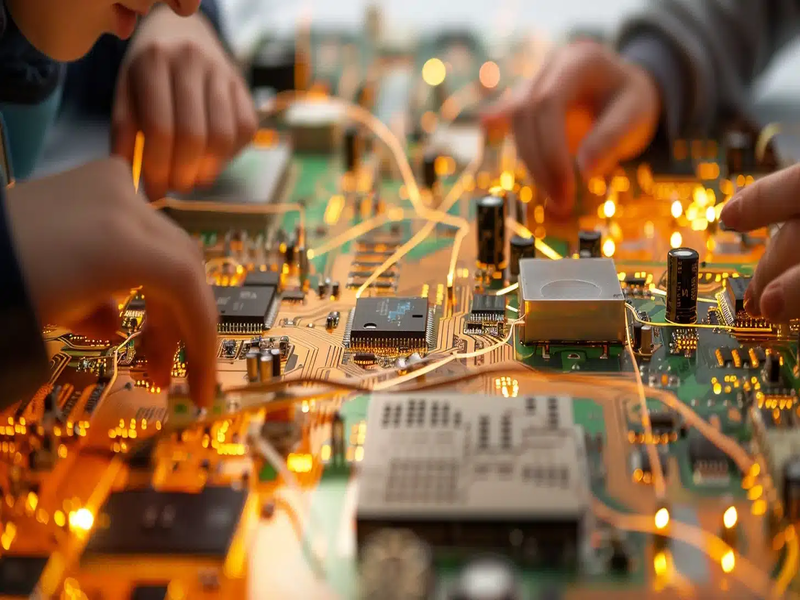Embedded Systems – Powering the Intelligent World

Embedded systems are specialized computing units that combine hardware and software within larger systems, such as washing machines, smart thermostats, industrial robots, and self-driving cars. Originating in the 1960s with the Apollo Guidance Computer, they gained popularity in the 1980s with microcontrollers and VLSI technology. The 1990s and early 2000s saw explosive growth with mobile phones, electronic control units (in automotive), and medical devices. Real-time operating systems, embedded Linux, and open-source platforms have made development easier and more robust. Today, embedded systems are integral to the Internet of Things, smart homes, and wearable tech.
Artificial intelligence is revolutionizing embedded systems by enabling edge AI, which processes data locally without cloud communication, enhancing privacy and minimizing latency. Smart sensors and actuators, including low-power machine learning models, are used for anomaly detection, facial recognition, and natural language understanding. This is being applied to robots and drones, with chips from Qualcomm, STMicroelectronics, and NXP enabling real-time processing of vision, voice, and sensor data. The synergy between embedded computing and machine intelligence will define next-gen technologies like smart cities, digital health, autonomous mobility, and intelligent homes.
The India Brand Equity Foundation (IBEF - https://www.ibef.org/industry/electronics-system-design-manufacturing-esdm) projects that by 2025, the country's embedded systems-related Electronics System Design & Manufacturing (ESDM) industry will generate US$520 billion, with the market for electronic goods expected to reach US$400 billion. With the help of government programs like Make in India, Digital India, and Start-up India, the sector hopes to create 12 million jobs by 2027. The government has also sanctioned ₹1.52 lakh crore ($18 billion) in investments under the Semicon India Program (https://www.semiconindia.org), which is anticipated to generate 85,000 jobs in the semiconductor and electronics manufacturing industry. By 2027, the global embedded systems market is anticipated to grow to a value of over $130 billion, propelled by sectors such as consumer electronics, industrial automation, healthcare, and automotive.
To meet the growing demand for skilled embedded systems professionals, the Department of Electronics and Communication Engineering at Presidency School of Engineering, offers B.Tech. Electronics & Communication Engineering, B.Tech. VLSI and M.Tech. Embedded Systems & VLSI which will enable students to explore roles like embedded software developer, firmware engineer, embedded Linux engineer, IoT solutions architect, and edge AI developer. Key skills include proficiency in C/C++, RTOS experience, ARM-based microcontroller knowledge, and familiarity with TensorFlow Lite or TinyML for AI on microcontrollers.
Dr. Rajiv Ranjan Singh
Professor & HoD, Department of Electronics and Communication Engineering / Electrical and Electronics Engineering, Presidency University, Bengaluru













 Rajanukunte, Yelahanka, Bengaluru, Karnataka, Pin: 560119, India
Rajanukunte, Yelahanka, Bengaluru, Karnataka, Pin: 560119, India
 +91 9022092222
+91 9022092222